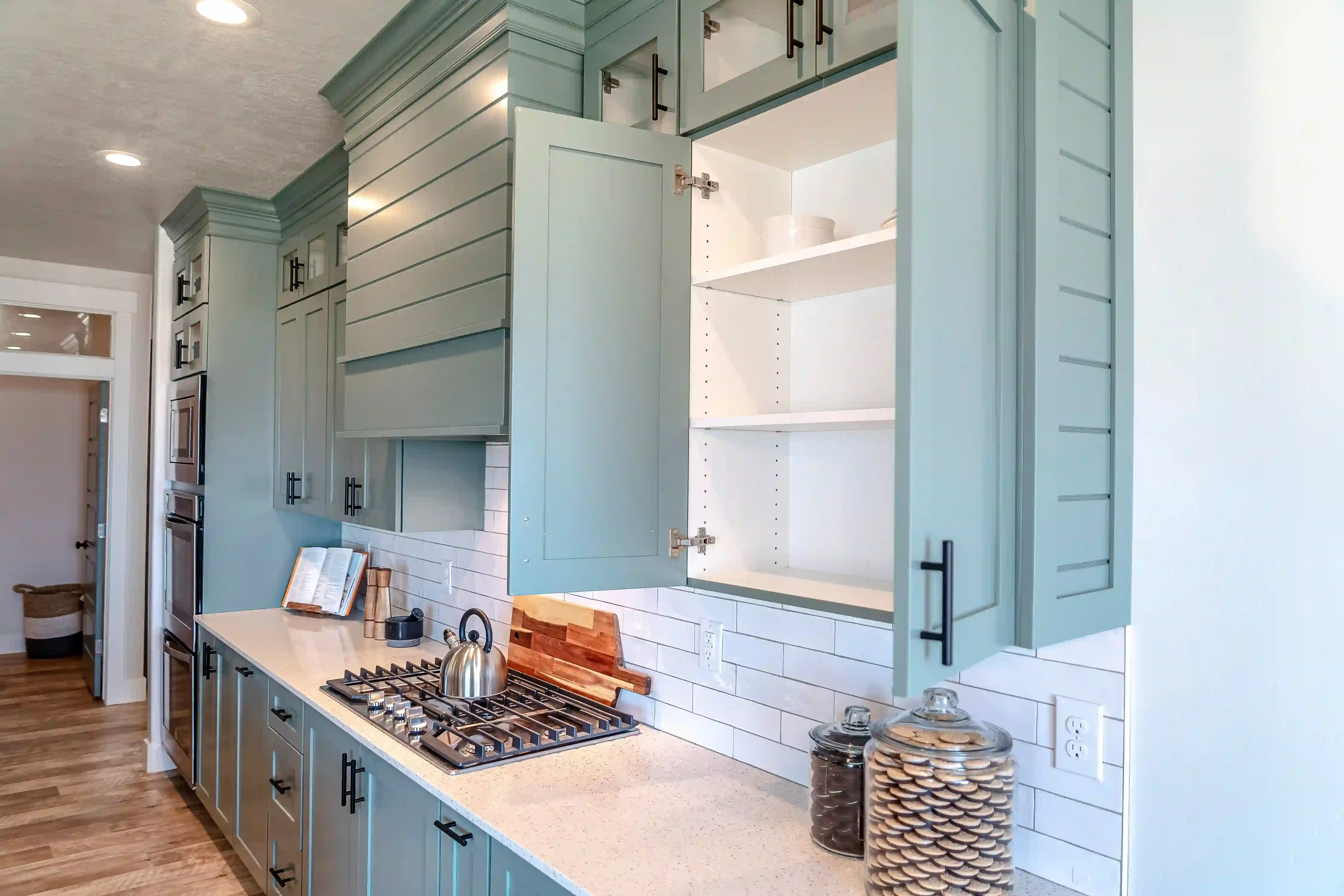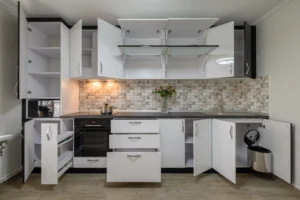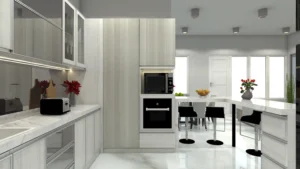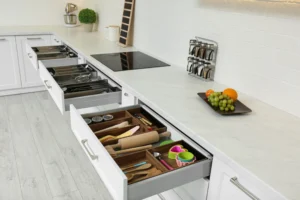Introduction
Have you been wondering how to refinish kitchen doors without draining your savings on a full remodel?
With a few DIY refinishing techniques, you can transform tired doors into modern showpieces.
Refinishing cabinet doors is not only budget-friendly but also eco-friendly since it saves existing wood and materials.
Whether you want to paint, stain, or restore your kitchen doors, this guide will walk you through every step, providing practical tips along the way.
By the end, you’ll know the steps, what supplies to use, and some helpful tips to make your cabinets look new again, all without spending a fortune.
Table of Contents
1. How to Refinish Kitchen Doors: A Step-by-Step Beginner’s Guide
Learning how to refinish kitchen doors is simpler than you think. Start by removing the doors, cleaning with a degreaser, and sanding to smooth surfaces.
Apply primer, then paint or stain depending on your style. Finish with a protective coat to keep the cabinets durable. This step-by-step kitchen door refinishing method guarantees a professional look even for beginners.
2. Why Refinishing Kitchen Doors is Better Than Replacing
Replacing cabinets can cost thousands, but refinishing cabinet doors is a cost-effective way to upgrade your kitchen.
Not only does it save money, but it also supports eco-friendly living by reducing waste. Many homeowners prefer refinishing oak cabinet doors or laminate doors instead of buying new ones.
3. Tools and Materials You’ll Need
Before starting your DIY cabinet makeover, gather supplies:
- Sandpaper or an orbital sander
- Degreaser for cleaning
- Primer (best primer for glossy cabinet doors)
- High-quality cabinet paint or wood stain
- Brushes, rollers, and painter’s tape
- Drill for removing hardware
Using the right tools ensures refinishing results last and look professional. Many experts recommend non-toxic cabinet refinishing products for a healthier home.
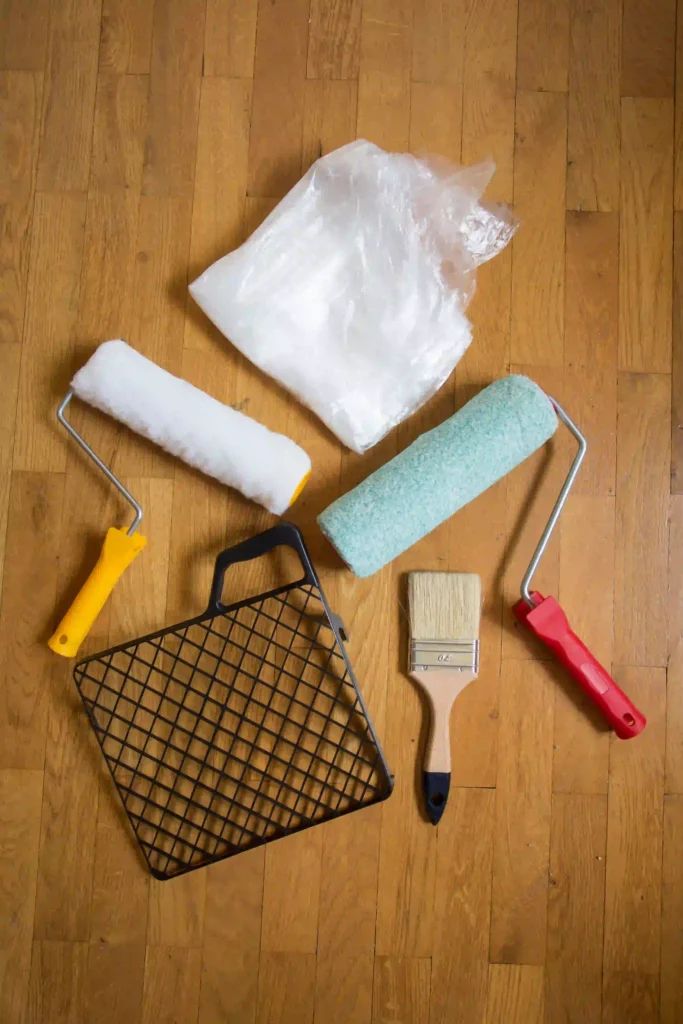
4. Preparing Your Cabinets: Cleaning and Sanding
Good prep leads to a flawless finish. First, clean doors thoroughly to remove grease buildup. Next, sand lightly to roughen glossy surfaces, which helps paint stick better.
Skipping this step can cause peeling and uneven coats. If you want to refinish kitchen doors without sanding, you’ll need strong bonding primers; however, sanding still yields the best results.
5. How to Refinish Kitchen Doors with Paint
Painting is the most popular method for homeowners learning how to refinish kitchen doors. Select durable cabinet paints in trending colors, such as matte white, sage green, or navy blue.
Apply a high-quality primer before painting to prevent stains and ensure a smooth, even coverage. A topcoat sealer keeps the finish chip-resistant and long-lasting.
6. Staining vs. Painting: Which Finish is Best?
Choosing between stain and paint depends on your kitchen style. Staining brings out the wood grain for a natural, timeless look, which works well for oak cabinet doors.
Painting, on the other hand, lets you try bold, modern ideas. Both options have their pros and cons. Staining needs less upkeep, while painting gives you more color choices for updates.
7. DIY or Hire a Pro?
Refinishing cabinet doors is a fantastic weekend DIY project. With patience, you can refinish shaker cabinet doors or laminate surfaces at home.
However, if you want a flawless finish, professional cabinet refinishing may be a worthwhile investment. DIY saves money, but pros often use spray equipment for a smoother, factory-like finish.
8. How to Refinish Kitchen Doors Without Removing Them
Short on time? You can refinish cabinet doors without needing to remove them. Use painter’s tape to protect walls and hinges, and work carefully to avoid drips.
This method is ideal for small kitchen cabinet refinishing projects or quick weekend cabinet refinishing projects when you want results fast but don’t want the hassle of detaching doors.
9. Budget-Friendly Refinishing Hacks
Updating kitchen cabinets doesn’t need to be expensive. Try these hacks:
- Reuse cabinet hardware by cleaning or spray-painting it to give it a fresh look.
- Buy primer and paint in bulk to cut costs.
- Use DIY kitchen upgrades under $200, such as peel-and-stick lining for inside shelves.
- Mix non-toxic cabinet refinishing products for eco-friendly results.
These small changes deliver big transformations without breaking the bank.
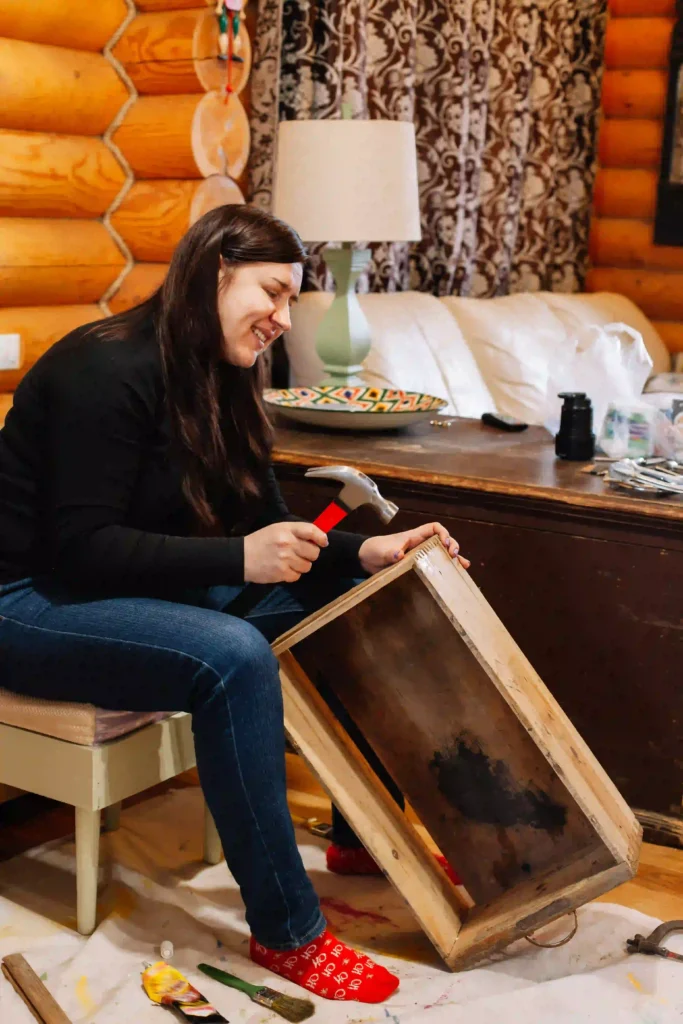
10. Maintenance Tips for Long-Lasting Results
Once refinished, proper care will keep your cabinets looking like new. Clean with mild soap and water, avoid harsh chemicals, and touch up scratches early.
Add felt pads to doors to prevent chipping. With consistent care, your refinished cabinet doors will stay beautiful and durable for years.
FAQ’s
1. What is the cheapest way to refinish kitchen cabinet doors?
The most affordable option is to paint your cabinet doors. Just sand them, apply a primer, and use a durable cabinet paint. You can do it yourself for less than $200 and give your kitchen a fresh, modern update without having to replace anything.
2. Can you refinish laminate kitchen doors?
You can refinish laminate doors by sanding them and using a strong bonding primer. While stain does not work on laminate, a good quality paint will give you a smooth, lasting finish.
3. How long does it take to refinish kitchen cabinet doors?
Refinishing typically takes two to four days, including time for cleaning, sanding, priming, painting, and drying. If you have a smaller kitchen and plan ahead, you can often finish the project in a weekend.
4. Is it better to refinish or replace kitchen doors?
Refinishing is usually cheaper and better for the environment than replacing your cabinet doors. Only consider replacement if the doors are badly damaged or warped. For most kitchens, refinishing is a great choice.
5. How do I prevent paint from chipping on refinished kitchen doors?
To help prevent paint from chipping, start with a bonding primer, use a tough cabinet paint, and finish with a protective topcoat. Clean the doors gently and add felt pads to soften any bumps for longer-lasting results.
